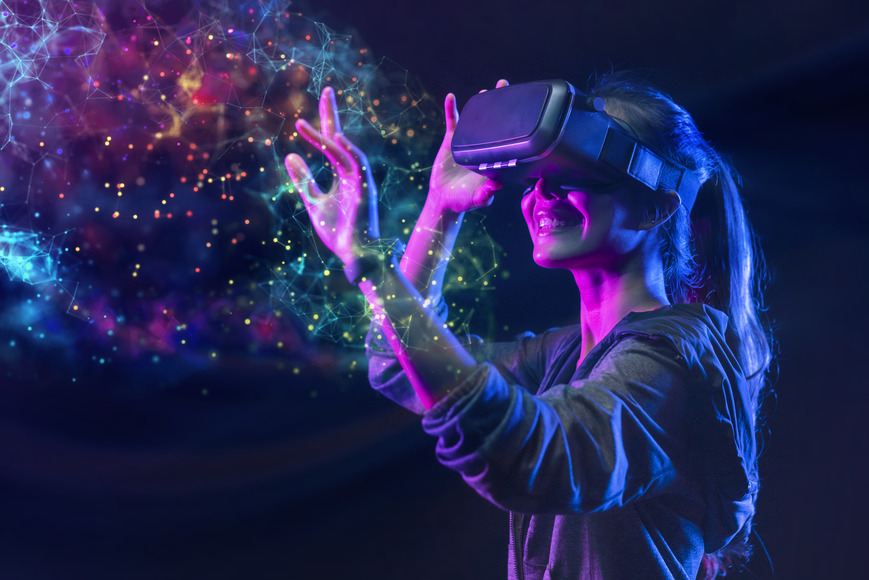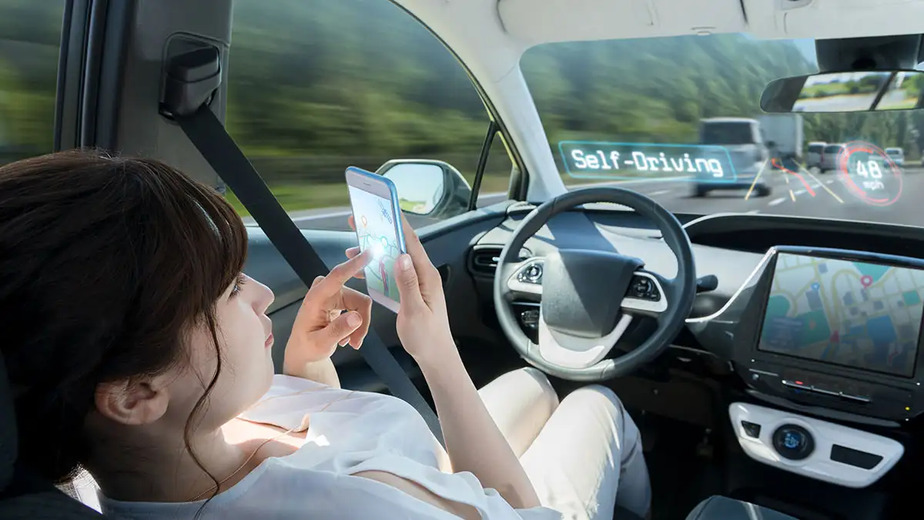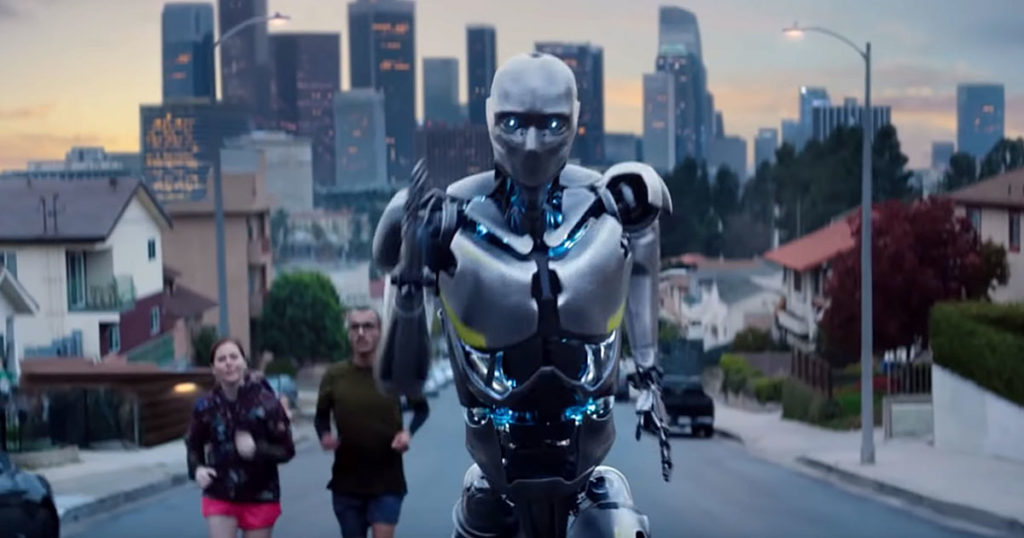
Future of Technology in 2023
Today, we will be discussing the latest technology that is expected to be available in 2023. The technology industry is constantly evolving, and it can be difficult to predict with certainty which technologies will be developed and how they will be used. However, there are many experts and analysts who are making predictions about the future of technology, and in this post, we will be exploring some of the key trends and forecasts for technology in 2023.
Some of the technologies and innovations that we will be discussing include artificial intelligence and machine learning, the Internet of Things (IoT), virtual and augmented reality, renewable energy, and biotechnology. We will be examining the potential impacts and consequences of these technologies, as well as the challenges and limitations that they may face.
Overall, the future of technology in 2023 is an exciting and dynamic field, and it is important to stay up-to-date with the latest developments and innovations. In this post, we will be exploring some of the key trends and predictions for technology in 2023, and we hope that you will join us as we examine the latest technology that is expected to be available in the coming years.
Overview of current state of technology:
The current state of technology is constantly evolving, but some of the major advancements and trends that have emerged in recent years include:
Artificial intelligence and machine learning:
AI and machine learning technologies have made significant progress in recent years, with the development of advanced algorithms and systems that can perform tasks like image and speech recognition, natural language processing, and data analysis. These technologies have a wide range of applications, including in areas like healthcare, finance, and customer service.
Internet of Things (IoT):
The IoT refers to the growing network of devices and sensors that are connected to the internet and can collect and transmit data. These devices include everything from smart thermostats and security cameras to wearable fitness trackers and smart appliances. The IoT is expected to continue growing in the coming years, with more and more devices becoming connected and the development of new technologies like 5G networks and edge computing.
Virtual and augmented reality:
Virtual and augmented reality technologies have made significant strides in recent years, with the development of immersive VR and AR experiences that are being used in a variety of applications, including entertainment, education, and training. These technologies are expected to continue evolving and becoming more widespread in the coming years.
Renewable energy:
The renewable energy industry has made significant progress in recent years, with the development of new technologies like solar panels, wind turbines, and energy storage systems. These technologies are helping to reduce our reliance on fossil fuels and combat climate change, and they are expected to continue improving and becoming more affordable in the coming years.
Biotechnology:
The biotechnology industry has made significant progress in recent years, with the development of new therapies and treatments for a wide range of diseases and conditions. These therapies include everything from gene editing techniques like CRISPR to the use of stem cells and other cellular therapies. Biotechnology is expected to continue making significant advancements in the coming years, with the potential to revolutionize the way we treat and prevent diseases.
Limitations that are currently faced by the technology industry:
The technology industry is constantly evolving and facing new challenges and limitations, some of which include:
Privacy and security concerns:
As more and more devices and systems become connected to the internet, there are increasing concerns about privacy and security. Hackers and other malicious actors can potentially access sensitive data or disrupt networks, and there are also concerns about the potential misuse of personal data by companies or governments. These concerns have led to the development of new technologies and protocols to improve privacy and security, but they remain ongoing challenges.
Limited access to technology:
Despite the many benefits of technology, not everyone has equal access to it. In many parts of the world, people may not have access to the internet, computers, or other technologies due to economic or infrastructure challenges. This can create a digital divide that can have significant consequences for individuals and communities.
Ethical concerns:
As technology continues to advance, there are also ethical concerns that need to be considered. For example, the development of AI and machine learning technologies has raised questions about the potential for bias in algorithms and the ethical implications of replacing human workers with machines. Similarly, the development of new biotechnology therapies and treatments can raise ethical questions about the allocation of resources, the potential risks and benefits, and the impact on society.
Environmental impact:
The technology industry has a significant impact on the environment, both in terms of the resources that are used to produce and operate technologies, as well as the waste and pollution that is generated. There are ongoing efforts to make technology more sustainable and reduce its environmental impact, but these remain significant challenges.
Regulation:
As technology continues to advance and disrupt traditional industries, there are also ongoing debates about the appropriate level of regulation for the technology industry. There are concerns about the potential for overregulation to stifle innovation, but there are also concerns about the potential consequences of insufficient regulation, particularly in areas like privacy and security. Finding the right balance between these competing interests is a significant challenge.
Predictions for Technology in 2023:
There are many predictions and forecasts about the future of technology, and it is difficult to say with certainty what the state of technology will be in 2023. However, here are a few of the predictions and forecasts that experts and analysts are making about technology in 2023:

Continued development of AI and machine learning:
It is expected that AI and machine learning technologies will continue to advance in the coming years, with the development of more advanced algorithms and systems that can perform tasks like image and speech recognition, natural language processing, and data analysis. These technologies are expected to have a wide range of applications in areas like healthcare, finance, and customer service.
Expansion of the IoT:
The IoT is expected to continue growing in the coming years, with more and more devices becoming connected to the internet and the development of new technologies like 5G networks and edge computing. The IoT is expected to have a wide range of applications, including in areas like transportation, agriculture, and manufacturing.
Increased adoption of virtual and augmented reality:
It is expected that virtual and augmented reality technologies will continue to evolve and become more widespread in the coming years. These technologies are expected to have a wide range of applications, including in areas like entertainment, education, and training.
Further progress in renewable energy:
The renewable energy industry is expected to continue making progress in the coming years, with the development of new technologies like solar panels, wind turbines, and energy storage systems. These technologies are expected to become more affordable and help to reduce our reliance on fossil fuels and combat climate change.
Advances in biotechnology:
The biotechnology industry is expected to continue making significant advancements in the coming years, with the development of new therapies and treatments for a wide range of diseases and conditions. These therapies are expected to include everything from gene editing techniques like CRISPR to the use of stem cells and other cellular therapies.
Specific technologies that are expected to become more widespread in 2023:
It is difficult to predict with certainty which specific technologies or innovations will be developed or become more widespread in 2023, as the technology industry is constantly evolving and new developments can emerge unexpectedly. However, here are a few technologies or innovations that are expected to be developed or become more widespread in the coming years:

Self-driving vehicles:
Self-driving vehicles, also known as autonomous vehicles, are expected to become more widespread in the coming years. These vehicles are equipped with sensors and other technologies that allow them to navigate and operate without human intervention. It is expected that self-driving vehicles will have a wide range of applications, including in transportation, logistics, and public safety.
Quantum computing:
Quantum computing is a technology that uses the principles of quantum mechanics to perform calculations that are beyond the reach of classical computers. They are expected to be able to perform certain tasks much faster than classical computers, and they are expected to have a wide range of applications, including in areas like drug discovery, financial modeling, and data analysis.
Virtual assistants:
Virtual assistants are software programs that are designed to assist users with tasks and provide information. These assistants use artificial intelligence and machine learning technologies to understand and respond to user requests. It is expected that virtual assistants will become more widespread in the coming years, with the development of more advanced technologies and the integration of virtual assistants into a wider range of devices and systems.
5G networks:
5G networks are the next generation of wireless networks that are expected to offer faster speeds and lower latencies than current 4G networks. It is expected that 5G networks will be rolled out in more countries and regions in the coming years, and they will have a wide range of applications, including in areas like the IoT, self-driving vehicles, and virtual and augmented reality.
Advanced robotics:
Robotics technologies are expected to continue evolving and becoming more advanced in the coming years. These technologies are expected to have a wide range of applications, including in manufacturing, healthcare, and other industries. It is possible that new types of robots or robot systems will be developed in the coming years, or that existing technologies will be refined and improved.
Potential impacts of new Technology:
The potential impacts and consequences of new technology that is expected to be available in 2023 are difficult to predict with certainty, as it is difficult to know exactly which technologies will be developed and how they will be used. However, here are a few potential impacts and consequences that are worth considering:

Changes to the way we work and live:
New technologies are expected to have significant impacts on the way we work and live. For example, self-driving vehicles and advanced robotics technologies may change the way goods are transported and manufactured, and they may also impact the job market. Similarly, the expansion of the IoT and the development of new virtual and augmented reality technologies may change the way we interact with each other and our environment.
Economic impacts:
New technologies are also expected to have significant economic impacts. For example, the development of quantum computing and other advanced technologies may lead to the creation of new industries and business opportunities. At the same time, however, new technologies may also disrupt existing industries and lead to job displacement.
Environmental impacts:
The technology industry has a significant impact on the environment, and the development of new technologies may have both positive and negative impacts. For example, renewable energy technologies may help to reduce our reliance on fossil fuels and combat climate change, but the production and use of technologies can also generate waste and pollution. It is important to consider the potential environmental impacts of new technologies and to find ways to minimize their negative impacts.
Social and cultural impacts:
New technologies may also have significant social and cultural impacts. For example, the expansion of the internet and the development of new virtual and augmented reality technologies may change the way we communicate and interact with each other, and they may have implications for issues like social isolation and mental health. Similarly, the development of new biotechnology therapies and treatments may have implications for issues like access to healthcare and the allocation of resources.
Ethical concerns:
As new technologies are developed, it is important to consider the ethical implications and to ensure that they are used in a responsible and ethical manner. For example, the development of AI and machine learning technologies may raise questions about bias in algorithms and the ethical implications of replacing human workers with machines. Similarly, the development of new biotechnology therapies and treatments may raise ethical questions about the allocation of resources, the potential risks and benefits, and the impact on society.
Technology in 2023 may change the way people live, work, and interact with each other:
New technologies are expected to have significant impacts on the way people live, work, and interact with each other. Here are a few ways in which technology may change the way people live, work, and interact in the coming years:
Changes to the way we work:
Technology is expected to have a significant impact on the way we work in the coming years. For example, the development of AI and machine learning technologies may change the way we perform tasks and make decisions, and the expansion of the IoT may change the way we monitor and control systems and processes. Similarly, the development of virtual and augmented reality technologies may change the way we train and educate people, and the advancement of renewable energy technologies may change the way we power our homes and businesses.
Changes to the way we live:
Technology is also expected to have a significant impact on the way we live in the coming years. For example, the development of self-driving vehicles and advanced robotics technologies may change the way we get around and the way we perform tasks, and the expansion of the IoT may change the way we control and monitor our homes and appliances. Similarly, the development of virtual and augmented reality technologies may change the way we entertain and educate ourselves, and the advancement of renewable energy technologies may change the way we power our homes and communities.
Changes to the way we interact:
Technology is expected to have a significant impact on the way we interact with each other in the coming years. For example, the expansion of the internet and the development of new virtual and augmented reality technologies may change the way we communicate and interact with each other, and they may have implications for issues like social isolation and mental health. Similarly, the development of new biotechnology therapies and treatments may change the way we access and receive healthcare, and the advancement of renewable energy technologies may change the way we power our communities and interact with our environment.
Overall, it is important to consider the potential impacts and consequences of new technologies and to ensure that they are used in a responsible and ethical manner. It is also important to be aware of the potential challenges and limitations that may arise as technology continues to evolve and to find ways to address them.
Conclusion:
In conclusion, the future of technology in 2023 is expected to be marked by significant advancements and innovations. Some of the key trends and predictions for technology in 2023 include the continued development of AI and machine learning technologies, the expansion of the IoT, the increased adoption of virtual and augmented reality technologies, further progress in renewable energy, and advances in biotechnology. These technologies are expected to have a wide range of impacts and consequences, including changes to the way we work and live, economic impacts, environmental impacts, social and cultural impacts, and ethical concerns.
It is difficult to predict with certainty what the future of technology will hold, and new technologies and innovations can emerge unexpectedly. However, it is clear that technology will continue to play a significant role in shaping the world in which we live, and it is important to stay up-to-date with the latest developments and to consider the potential impacts and consequences of new technologies. It is also important to be aware of the challenges and limitations that may arise as technology continues to evolve, and to find ways to address them in a responsible and ethical manner. Overall, the future of technology in 2023 is an exciting and dynamic field, and it is important to continue following developments and staying informed about the latest innovations.



